Dear Zazie,
Here is today’s Lovers’ Chronicle from Mac Tag. Follow us on twitter @cowboycoleridge. Who do you go to the river with? Rhett
The Lovers’ Chronicle
Dear Muse,
an overused word
“Sets a high bar”
best used in the context
of us for each other
“I like that”
or how it feels with you
whatever we are doin’
“And a song”
has to be Lou Reed
days spent with her
drinkin’ sangria
goin’ to the movies
how she keeps him
hangin’ on
“And it bet they ended here”
in each other’s arms, perfectly
© copyright 2023 mac tag/cowboycoleridge all rights reserved
we feel it
and it is
we need not be told
about lettin’ go
transcendin’
surprisin’ ourselves
very few
have it in them
but we do
we came to ask
we just wanted
to be and we are
losin’ ourselves
in this vision
this mutual
seduction
we believed
what was denied
was only delayed
©copyright 2022 mac tag/cowboy colridge all rights reserved
© copyright 2020 mac tag/cowboy coleridge all rights reserved
i felt it
it was perfect
tell me it was
not about control
about lettin’ go
transcendence
surprise yourself
very few
have it in them
come to ask
if you will
dance
so we can
lose ourselves
in mutual
seduction
© copyright 2019 mac tag/cowboy coleridge all rights reserved
“Well, I have to go
and you need to write.
Go write something
beautiful.”
ah, but it does not
work that way
beauty writes itself
we came to ask
we just wanted to be
we felt it
perfect
it was perfect
seducin’ each other
when in control
turned to lettin’ go
surprised even us
a transcendence
few ever reach
© copyright 2018 mac tag/cowboy coleridge all rights reserved
By The River
Saw her again today
I see her everywhere
In the sunrise
In the sunset
In the flowers
In the forest
In the mountains
In the meadow
Ridin’ horses
Takin’ a walk
Smilin’ that smile
By the river
Wherever beauty is
That is where I see her
She’s in my dreams
She’s in the stars
She’s in the moon
She’s in my thoughts
She’s in the mist
She’s in the snow
Ridin’ with me
Takin’ my heart
Smilin’ at me
By the river
© copyright 2013 mac tag/Cowboy Coleridge all rights reserved
The Song of the Day is “The River” by Breed 77. We do not own the rights to this song. All rights reserved by the rightful owner. No copyright infringement intended.
| Il barbiere di Siviglia The Barber of Seville |
|
|---|---|
| Opera buffa by Gioachino Rossini | |

Portrait of the composer
|
|
Today is the premiere day of The Barber of Seville, or The Useless Precaution (Il barbiere di Siviglia, ossia L’inutile precauzione; an opera buffa in two acts by Gioachino Rossini with an Italian libretto by Cesare Sterbini. The libretto was based on Pierre Beaumarchais’s French comedy Le Barbier de Séville (1775). The première of Rossini’s opera (under the title Almaviva, o sia L’inutile precauzione) took place on 20 February 1816 at the Teatro Argentina, Rome.
In my opinion, Rossini’s Barber is one of the greatest masterpieces of comedy within music. It is the the opera buffa of all “opere buffe”. It remains a popular work.

- Place: Seville, Spain
- Time: 18th century
Act 1
The square in front of Bartolo’s house
In a public square outside Bartolo’s house a band of musicians and a poor student named Lindoro are serenading, to no avail, the window of Rosina (“Ecco, ridente in cielo”; “There, laughing in the sky”). Lindoro, who is really the young Count Almaviva in disguise, hopes to make the beautiful Rosina love him for himself – not his money. Almaviva pays off the musicians who then depart, leaving him to brood alone. Rosina is the young ward of the grumpy, elderly Bartolo and she is allowed very little freedom because Bartolo plans to marry her once she is of age and thus appropriate her not inconsiderable dowry.
Figaro approaches singing (Aria: “Largo al factotum della città”; “Make way for the factotum of the city”). Since Figaro used to be a servant of the Count, the Count asks him for assistance in helping him meet Rosina, offering him money should he be successful in arranging this. (Duet: “All’idea di quel metallo”; “At the idea of that metal”). Figaro advises the Count to disguise himself as a drunken soldier, ordered to be billeted with Bartolo, so as to gain entrance to the house. For this suggestion, Figaro is richly rewarded.
A room in Bartolo’s house with four doors
The scene begins with Rosina’s cavatina, “Una voce poco fa” (“A voice a little while ago”). (This aria was originally written in the key of E major, but it is sometimes transposed a semitone up into F major for coloratura sopranos to perform, giving them the chance to sing extra, almost traditional, cadenzas, sometimes reaching high Ds or even Fs.)
When the two have gone, Rosina and Figaro enter. Figaro asks Rosina to write a few encouraging words to Lindoro, which she has actually already written. (Duet: “Dunque io son…tu non m’inganni?”; “Then I’m the one…you’re not fooling me?”). Although surprised by Bartolo, Rosina manages to fool him, but he remains suspicious. (Aria: “A un dottor della mia sorte”; “To a doctor of my class”).Knowing the Count only as Lindoro, Rosina writes to him. As she is leaving the room, Bartolo and Basilio enter. Bartolo is suspicious of the Count, and Basilio advises that he be put out of the way by creating false rumours about him (this aria, “La calunnia è un venticello” – “Calumny is a little breeze” – is almost always sung a tone lower than the original D major).
Count Almaviva, disguised as a soldier and pretending to be drunk, enters the house and demands to be quartered there. In fear of the drunken man, Berta the housekeeper rushes to Bartolo for protection. Bartolo tells the “soldier” that he (Bartolo) has an official exemption which excuses him from the requirement to quarter soldiers in his home. Almaviva pretends to be too drunk and belligerent to understand, and dares Bartolo to brawl. While Bartolo searches his cluttered desk for the official document which would prove his exemption, Almaviva whispers to Rosina that he is Lindoro in disguise, and passes a love-letter to her. Bartolo suspiciously demands to know what is in the piece of paper in Rosina’s hands, but she fools him by handing over her laundry list. Bartolo and the Count argue loudly. Basilio enters; then Figaro, who warns that the noise of the argument is rousing the whole neighborhood. Finally, the noise attracts the attention of the Officer of the Watch and his troops, who crowd into the room. Bartolo demands that the Officer arrest the “drunken soldier”. The Officer starts to do so, but Almaviva quietly reveals his true identity to the Officer, and he (the Officer) backs off and stands down. Bartolo and Basilio are astonished and mystified; Figaro laughs quietly at them. (Finale: “Fredda ed immobile, come una statua”; “Cold and still, just like a statue”). The confusion intensifies and causes everyone to suffer headaches and auditory hallucinations (“Mi par d’esser con la testa in un’orrida fucina; dell’incudini sonore l’importuno strepitar.”; “My head seems to be in a fiery forge: the sound of the anvils deafens the ear.”)
Act 2
A room in Bartolo’s house with a piano
Almaviva again appears at the doctor’s house, this time disguised as a priest who is also a singing tutor and pretending to act as substitute for the supposedly ailing Basilio, Rosina’s regular singing teacher. Initially, Bartolo is suspicious, but does allow Almaviva to enter when the Count gives him Rosina’s letter. He describes his plan to discredit Lindoro whom he believes to be one of the Count’s servants, intent on pursuing women for his master. While Almaviva pretends to give Rosina her singing lesson, Figaro arrives to shave Bartolo. Bartolo demurs, but Figaro makes such a scene he agrees, but in order not to leave the supposed music master alone with Rosina, the doctor has Figaro shave him right there in the music room. When Basilio suddenly appears, he is bribed by a full purse from Almaviva and persuaded to leave again, with much discussion of how ill he looks. (Quintet: “Don Basilio! – Cosa veggo!”; “Don Basilio! – What do I see?”). Figaro begins to shave Bartolo, but Bartolo overhears the lovers conspiring, and angrily drives everybody away.
The scene returns to the location of act 1 with a grill looking out onto the square. Bartolo orders Basilio to have the notary ready to marry him to Rosina that evening. He also explains his plot to come between the lovers. Basilio leaves and Rosina arrives. Bartolo shows Rosina the letter she wrote to “Lindoro”, and persuades her that this is evidence that Lindoro is merely a flunky of Almaviva and is toying with her at Almaviva’s behest. Rosina believes him and agrees to marry him.
During an instrumental interlude, the music creates a thunder storm to indicate the passage of time. The Count and Figaro climb up a ladder to the balcony and enter the room through a window. Rosina shows Almaviva the letter and accuses him of betraying her. Almaviva reveals his identity and the two reconcile. While Almaviva and Rosina are enraptured by one another, Figaro keeps urging them to leave. Two people are heard approaching the front door, who later turn out to be Basilio and the notary. However, when the Count, Rosina, and Figaro attempt to leave by way of the ladder, they discover it has been removed. The marriage contract requires two witnesses; Figaro is one, but another is needed. The Count makes Basilio an offer he can’t refuse: the choice of accepting a bribe and being a witness to his marriage or receiving two bullets in the head (an easy choice, Basilio says). He and Figaro witness the signatures to a marriage contract between the Count and Rosina. Bartolo barges in, accompanied by the Officer and the men of the watch, but too late; the marriage is already complete. The befuddled Bartolo (who was the one who had removed the ladder) is pacified by being allowed to retain Rosina’s dowry. The opera concludes with an anthem to love (“Amor e fede eterna, si vegga in noi regnar!”).
| Pyotr Ilyich Tchaikovsky |
|---|

Today is the premiere day of Swan Lake (Russian: Лебединое озеро Lebedinoye ozero), Op. 20; a ballet composed by Pyotr Ilyich Tchaikovsky in 1875–76. It is now one of the most popular of all ballets. |
The scenario, initially in two acts, was fashioned from Russian folk tales and tells the story of Odette, a princess turned into a swan by an evil sorcerer’s curse. The choreographer of the original production was Julius Reisinger (Václav Reisinger). The ballet was premiered by the Bolshoi Ballet on 4 March [O.S. 20 February] 1877 at the Bolshoi Theatre in Moscow. Although it is presented in many different versions, most ballet companies base their stagings both choreographically and musically on the 1895 revival of Marius Petipa and Lev Ivanov, first staged for the Imperial Ballet on 15 January 1895, at the Mariinsky Theatre in St. Petersburg. For this revival, Tchaikovsky’s score was revised by the St. Petersburg Imperial Theatre’s chief conductor and composer Riccardo Drigo.
The libretto is based on a story by the German author Johann Karl August Musäus, “Der geraubte Schleier” (The Stolen Veil), though this story provides only the general outline of the plot of Swan Lake. However, there are many similarities: The hero Friedbert is, though no prince,a careless youth, whose father is dead. He befriends with Benno (who’s here an old monk). He tells him about the swan lake. Friedbert steals a veil, so the swan maiden and princess Kalliste can’t fly away. But Friedbert tells her that it was a wizard threatening her. When Kalliste finds the veil, she leaves Friedbert. But his mother and the wedding guests assume that Kalliste was a female demon and Friedbert a wizard. In the end, Friedbert manages to get her forgiveness and they live happily ever after. A fairy tale by the Brothers Grimm, the white and the black bride, and a Russian folktale “The White Duck” also bear some resemblance to the story of the ballet, and may have been another possible source. The contemporaries of Tchaikovsky recalled the composer taking great interest in the life story of Bavarian King Ludwig II, whose tragic life had supposedly been marked by the sign of Swan and who—either consciously or not—was chosen as the prototype of the dreamer Prince Siegfried. However, the tragic death happened in 1886, 10 years after the first performance in 1877. A better explanation is that Siegfried represents the romantic composer Tchaikovsky himself, struggling between duties and longing for true love. The Russian ballet patriarch Fyodor Lopukhov has called Swan Lake a “national ballet” because of its swans, which he argues originate from Russian lyrically romantic sources, while many of the movements of the corps de ballet originated from Slavonic ring-dances. According to Lopukhov, “both the plot of Swan Lake, the image of the Swan and the very idea of a faithful love are essentially Russian.” The idea of a princess enchanted by an evil wizard is essentially Russian. However, the swan occurs in several Norse myths: Lohengrin, Wieland the blacksmith or The children of Lir. The names in Swan Lake are taken from several romantic icons: Siegfried the dragonslayer,Odette de Champdivers, Odile of Alsace, Emperor Friedrich Barbarossa (=Rotbart=Redbeard). The French Melusine, the English Tattercoats, and the greek myths like Cygnus or Cephalus and Procris might be other possible sources. It could be the hint that the cooperation of the Tzchech choreographer and the Russian composer intended an all-European fairy tale, in the times of upcoming nationalism. While the Biedermeier choreographer might have intended a parody of romanticism, Tschaikovsky contributed to the overwhelming romantic atmosphere. So Swan Lake is essential romantic.

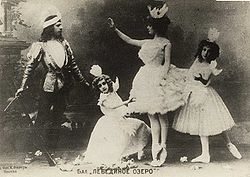




Roles
- Princess Odette (the Swan Queen and the White Swan or also the Swan Princess), a beautiful Princess, who has been transformed into a white swan
- Prince Siegfried, a handsome Prince who falls in love with Odette
- Baron Von Rothbart, an evil sorcerer, who has enchanted Odette
- Odile (the Black Swan), Rothbart’s daughter
- Benno von Sommerstern, the Prince’s friend
- The Queen, Prince Siegfried’s mother
- Wolfgang, his tutor
- Baron von Stein
- The Baroness, his wife
- Freiherr von Schwarzfels
- His wife
- A herald
- A footman
- Court gentlemen and ladies, friends of the prince, heralds, guests, pages, villagers, servants, swans, cygnets
By 1895, Benno von Sommerstern had become just “Benno,” and Odette “Queen of the Swans.” Also Baron von Stein, his wife, and Freiherr von Schwarzfels and his wife were no longer identified on the program. The sovereign or ruling Princess is often rendered “Queen Mother.” Rothbart (“Redbeard”) may also be spelled Rotbart.
Princess Odette, the White Swan is the lead ballerina role. Rothbart’s daughter Odile is danced by the same ballerina; this facilitates the scene in which Odile, disguised as Odette, tricks Prince Siegfried into being unfaithful. Odette also appears in many adaptations of the ballet.
Odette is often referred to as a “tragic heroine” and is always portrayed as vulnerable, gentle, caring, modest and warm-hearted. She appears in the second and fourth acts, though she also makes a minor appearance in the third act when she appears as a vision during the Ball. As the heroine of the story, she has been transformed into a swan by Rothbart and can only regain her human form at night. She has many companions under the same spell, who have made her their princess, hence her title “The Swan Princess.” She is forced to live by a lake that was magically formed from the tears of her grieving mother after Rothbart kidnapped her. The only way for the spell to be broken is by the power of eternal love between Odette and a young man who will remain faithful to her, for if the vow of eternal love is broken, she will remain a swan forever. When Odette falls in love with Prince Siegfried, hope for her freedom has come at last, until Siegfried is tricked into breaking his vow by Rothbart, trapping Odette as a swan forever. To escape the spell, Odette chooses to die and Siegfried chooses to die with her; the lovers drown themselves in the lake and are reunited forever in death.
Prince Siegfried is the lead male ballet dancer role. Like Odette and Rothbart, he appears in many adaptations of the ballet, although he has a different name in almost every one, despite retaining some or all of his characteristics.
Out of all the characters in the ballet, Siegfried is the only one to appear in all four acts. He is a young Prince, full of bright spirit and enthusiasm, and seems to have little interest in his royal role. He clearly cares more for socialising, merry events and sporting activities, as shown when he is celebrating his 21st birthday with his best friend, Benno and his tutor, Wolfgang. When his mother, the Queen tells him he must soon marry, he refuses because he has not yet found a woman of his preference. His favourite hobby is hunting, so to end his birthday celebrations, he and Benno head into the forest on a hunting expedition with their companions. However, everything takes an ironic twist on this expedition, for deep in the forest, Siegfried and his friends arrive at a lake, where Siegfried spots a beautiful swan wearing a crown. But before he can shoot it, the swan transforms into the most beautiful woman he has ever seen: Princess Odette, the Princess of the Swans. Struck by her beauty, Siegfried falls in love with her at once. She tells him her story, explaining that she is under a spell of the evil sorcerer Rothbart. It is at this point in the ballet that Siegfried’s carefree spirit is overcome by a sudden growth to manhood out of his love for Odette and from that point, it becomes his goal to save and marry her. He invites her to attend a Ball at his castle and promises to choose her as his bride, but everything takes a turn for the worse.
On the night of the Ball, Siegfried is thinking of nothing but Odette, and after rejecting various potential brides in her favour, he is overjoyed when she finally arrives. But it is actually Rothbart’s daughter Odile in disguise, for Rothbart has magically disguised her as Odette. Suspecting nothing, Siegfried falls for the trickery and pledges eternal love to Odile, thinking she is Odette and now all seems lost. Siegfried follows Odette back to the lake and begs her to forgive him, swearing that he loves her only. She forgives him, but explains that she has chosen to die so she can escape Rothbart’s spell. Unwilling to live without her, Siegfried chooses to die with Odette and the lovers throw themselves into the lake, reuniting in death for all eternity.
Rothbart is a powerful and evil sorcerer who casts a spell on Odette that turns her into a swan every day and returns her to human form at night. The reason for Rothbart’s curse upon Odette is unknown; several versions, including two feature films, have suggested reasons, but none is typically explained by the ballet.
Rothbart is rarely seen in human form, as he appears as a giant owl in the second and fourth acts. His human form is seen only in the third act with his daughter Odile, when she dances with the Prince Siegfried.
When Rothbart realises that Odette has fallen in love with Prince Siegfried, he tries to intervene by tricking Siegfried into declaring his love for his daughter Odile. The plan succeeds, yet in the end, Rothbart is not triumphant. When Siegfried and Odette make the ultimate sacrifice in the name of their love by throwing themselves into the lake, Rothbart’s powers are overcome and he is destroyed.
However, his fate is different in some versions, as there are productions where Rothbart is triumphant and survives. One example is the Bolshoi Ballet’s version, where he is portrayed as a sadistic schemer and plays a wicked game of fate with Siegfried, which he wins at the end, causing Siegfried to lose everything. In the second American Ballet Theatre production of Swan Lake, he is portrayed by two dancers. One of them depicts him as young and handsome; it is this Rothbart that is able to lure Odette and transform her into a swan (this is shown during the introduction to the ballet in a danced prologue especially created by choreographer Kevin McKenzie). He is also able to entice the Prince to dance with Odile, and thus seal Odette’s doom. The other Rothbart, a repulsive, reptilian-like creature, reveals himself only after he has performed an evil deed, such as transforming Odette into a swan. In this version, the lovers’ joint suicide inspires the rest of Rothbart’s imprisoned swans to turn on him and overcome his spell, which ultimately defeats him.
Odile, the Black Swan is the daughter of Rothbart, who is also an evil witch and who is willing to follow in her father’s footsteps. She only appears in the third act, usually dressed in black (though in the 1895 production, she did not wear black) and magically disguised as Odette in order to help her father trick Siegfried into breaking his vow of love to Odette. In some productions, Odile is known as the Black Swan and, rather than being magically disguised as her, is actually Odette’s evil twin or double; an example of this type of portrayal is seen in the production by the Bolshoi Ballet. There are also some productions where Odette and Odile are danced by two different ballerinas.
Synopsis
Below is a synopsis based on the 1895 libretto. Swan Lake is generally presented in either four Acts, four Scenes (primarily outside Russia and Eastern Europe) or three Acts, four Scenes (primarily in Russia and Eastern Europe). Some productions in the West include a prologue that shows the actual transformation by which Princess Odette is first turned into a swan by Rothbart. The biggest difference of productions all over the world is that the ending varies from romantic to tragic.
Prologue
This scene can take place anywhere. It shows Rothbart turning Odette into a swan.
Act 1
A magnificent park before a palace.
[Scène: Allegro giusto] Prince Siegfried is celebrating his birthday with his tutor, friends and peasants [Waltz]. The revelries are interrupted by Siegfried’s mother, the Queen [Scène: Allegro moderato], who is concerned about her son’s carefree lifestyle. She tells him that he must choose a bride at the royal ball the following evening. Siegfried is upset that he cannot marry for love. His friend Benno and the tutor try to lift his troubled mood. As evening falls [Sujet], Benno sees a flock of swans flying overhead and suggests they go on a hunt [Finale I]. Siegfried and his friends take their crossbows and set off in pursuit of the swans.
Act 2
A lakeside clearing in a forest by the ruins of a chapel. A moonlit night.

Siegfried has become separated from his friends. He arrives at the lakeside clearing, just as a flock of swans land nearby [Scène. Moderato]. He aims his crossbow at the swans [Scène. Allegro moderato-], but freezes when one of them transforms into a beautiful maiden, Odette [Scène. -Moderato]. At first, she is terrified of Siegfried. When he promises not to harm her, she tells him that she is the Swan Queen Odette. She and her companions are victims of a terrible spell cast by the evil owl-like sorcerer Rothbart. By day they are turned into swans and only at night, by the side of the enchanted lake – created from the tears of Odette’s mother – do they return to human form. The spell can only be broken if one who has never loved before swears to love Odette forever. Rothbart suddenly appears [Scène. -Allegro vivo]. Siegfried threatens to kill him but Odette intercedes – if Rothbart dies before the spell is broken, it can never be undone.
As Rothbart disappears, the swan maidens fill the clearing [Scène: Allegro, Moderato assai quasi andante]. Siegfried breaks his crossbow, and sets about winning Odette’s trust as the two fall in love. But as dawn arrives, the evil spell draws Odette and her companions back to the lake and they are turned into swans again.
Act 3
An opulent hall in the palace.
Guests arrive at the palace for a costume ball. Six princesses are presented to the prince [Entrance of the Guests and Waltz], one of whom his mother hopes he will choose as his bride. Then Rothbart arrives in disguise [Scène: Allegro, Allegro giusto] with his enchantress daughter, Odile, who has transformed her figure to appear as Odette. Though the princesses try to attract the prince with their dances [Pas de six], Siegfried, confusing Odile for Odette, has eyes only for her and dances with Odile. [Scène: Allegro, Tempo di valse, Allegro vivo] Odette appears as a vision and vainly tries to warn Siegfried that he is being deceived. But Siegfried remains oblivious and proclaims to the court that he intends to make Odile his wife. Rothbart shows Siegfried a magical vision of Odette and he realises his mistake. Grief-stricken, Siegfried hurries back to the lake.
Act 4
By the lakeside.

Odette is distraught at Siegfried’s betrayal. The swan-maidens try to comfort her, but she is resigned to death. Siegfried returns to the lake and finds Odette. He makes a passionate apology. She forgives him and the pair reaffirm their love. Rothbart appears and insists that Siegfried fulfill his pledge to marry Odile, after which Odette will be transformed into a swan forever. Siegfried chooses to die alongside Odette and they leap into the lake. This breaks Rothbart’s spell over the swan maidens, causing him to lose his power over them and he dies. In an apotheosis, the swan maidens watch as Siegfried and Odette ascend into the Heavens together, forever united in love.
Adaptations and references
Live action film
- The opening credits for the first sound version of Dracula (1931) starring Béla Lugosi includes a modified version of the Swan Theme from Act II. The same piece was later used for the credits of The Mummy (1932) and is often used as a backing track for the silent film, Phantom of the Opera (1925).
- The film I Was an Adventuress (1940) contained a long sequence from the ballet.
- In 1968–69, the Kirov Ballet along with Lenfilm studios produced a filmed version of the ballet starring Yelena Yevteyeva as Odette.
- In the film Funny Girl (1968), Barbra Streisand, playing Fanny Brice, dances in a comedic spoof of Swan Lake.
- The ballet is central to the plot of “Étoile” (1989).
- In Brain Donors (1992), the three main characters try and succeed in sabotaging a fictional production of the ballet.
-
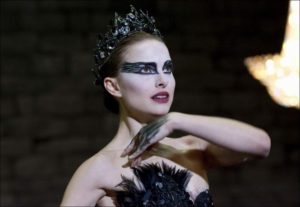
Natalie Portman in Black Swan
Darren Aronofsky’s Black Swan (2010) focuses on two characters from Swan Lake—the Princess Odette, sometimes called the White Swan, and her evil duplicate, the witch Odile (the Black Swan) portrayed by , and takes its inspiration from the ballet’s story, although it does not literally follow it. Clint Mansell’s score contains music from the ballet, with more elaborate restructuring to fit the horror tone of the film. One of my all time favorite movies!
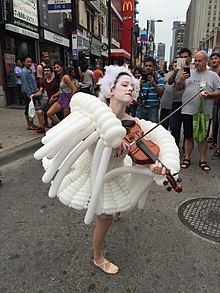

| Ansel Adams | |
|---|---|
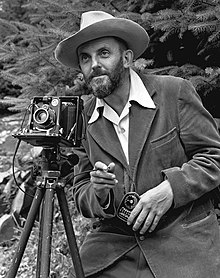 |
|
Today is the birthday of Ansel Easton Adams (San Francisco; February 20, 1902 – April 22, 1984 Monterey, California); photographer and environmentalist. His black-and-white landscape photographs of the American West, especially Yosemite National Park, have been widely reproduced on calendars, posters, books, and the internet.
He married Virginia Best in 1928 after a cooling-off period during 1925–26, during which he had short-lasting relationships with various women. The newly-weds moved in with his parents to save expenses. His marriage also marked the end of his serious attempt at a musical career, as well as her ambitions to be a classical singer.
Gallery
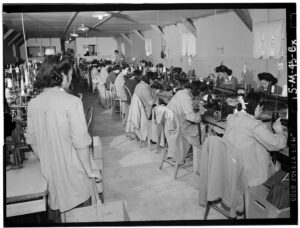
Japanese internment camp
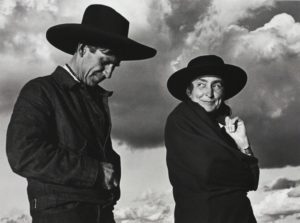
Georgia o’keeffe and Orville cox
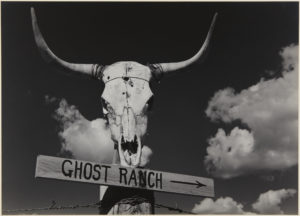
Ghost ranch
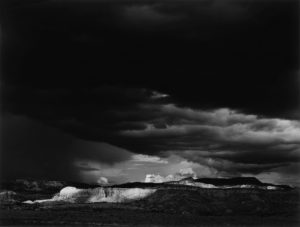
Ghost ranch

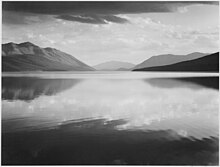
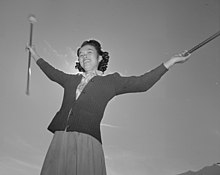

Mac Tag

No Comments on "The Lovers’ Chronicle 20 February – perfect – premiere of Rossini’s Il barbiere di Siviglia – premiere of Tchaikovsky’s Swan Lake – photography by Ansel Adams"